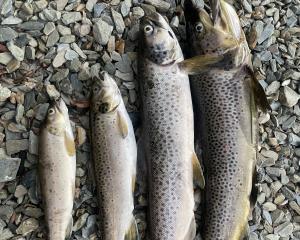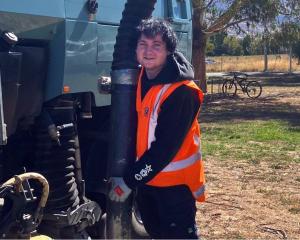A meeting in Glenorchy to discuss a Department of Conservation planned aerial drop of 1080 in the Dart, Routeburn and Caples Valleys led to some debate on Thursday evening.
Doc scientist Graeme Elliott gave an overview of the latest Battle for our Birds programme, announced by Conservation Minister Maggie Barry in Queenstown earlier this week.
Dr Elliott told an audience of about 50 people in Glenorchy Community Hall the use of 1080 was required to protect native birds and prevent a surge in predator numbers.
He described rats, mice, possums and stoats as a "baddies.''
"If we do nothing about it then we are leading our birds to extinction.''
During his presentation he referred to Doc research into nesting habits and mortality rates before and after drops in 2014 and gave an overview of the 2016 programme.
A question-and-answer session, chaired by Queenstowner Bill Baylis, was met with some suspicion.
One man in the audience accused him of "making up figures'', while one woman described 1080 as a "blunt instrument to deal with the problem.''
Glenorchy resident Fiona McQueen took exception to his explanation around toxicity levels.
"It is a fallacy to say 1080 disappears in a few weeks.''
Mr Baylis stepped in to "keep it calm'' while other comments in relation to the poison were directed at Dr Elliott, including questions on how humane its use was.
Speaking to the Otago Daily Times after the meeting, Dr McQueen said she had grave concerns over the use of 1080 and described information provided to the public as "superficial''.
"I am very upset about it and I am not the only person. I think this is a disastrous policy and I am not just talking off the top of my head because I don't like poisons.''
She believed Doc should focus on long-term studies.
She also thought more could be done with trapping.
"It is a very simplistic view, that you can throw a broad-spectrum poison on to the environment in huge quantities and expect it to have an effect on one species - the rat. That doesn't happen.''
Using kea as an example, she added: "What other country has an endangered bird, with numbers thought to be 1000? We are throwing poison on that bird species, knowing 20% of those birds can be killed with the poison directly on there. This whole thing is a waste of time. All it is going to do is kill off vulnerable species.''
Bringing the meeting to a close, Doc operations manager Geoff Owen said while views differed it was important to remember the end goal; to protect native birds.
The aerial drop around Glenorchy is due to take place between August and October and he said Doc would keep locals fully briefed on the situation.












